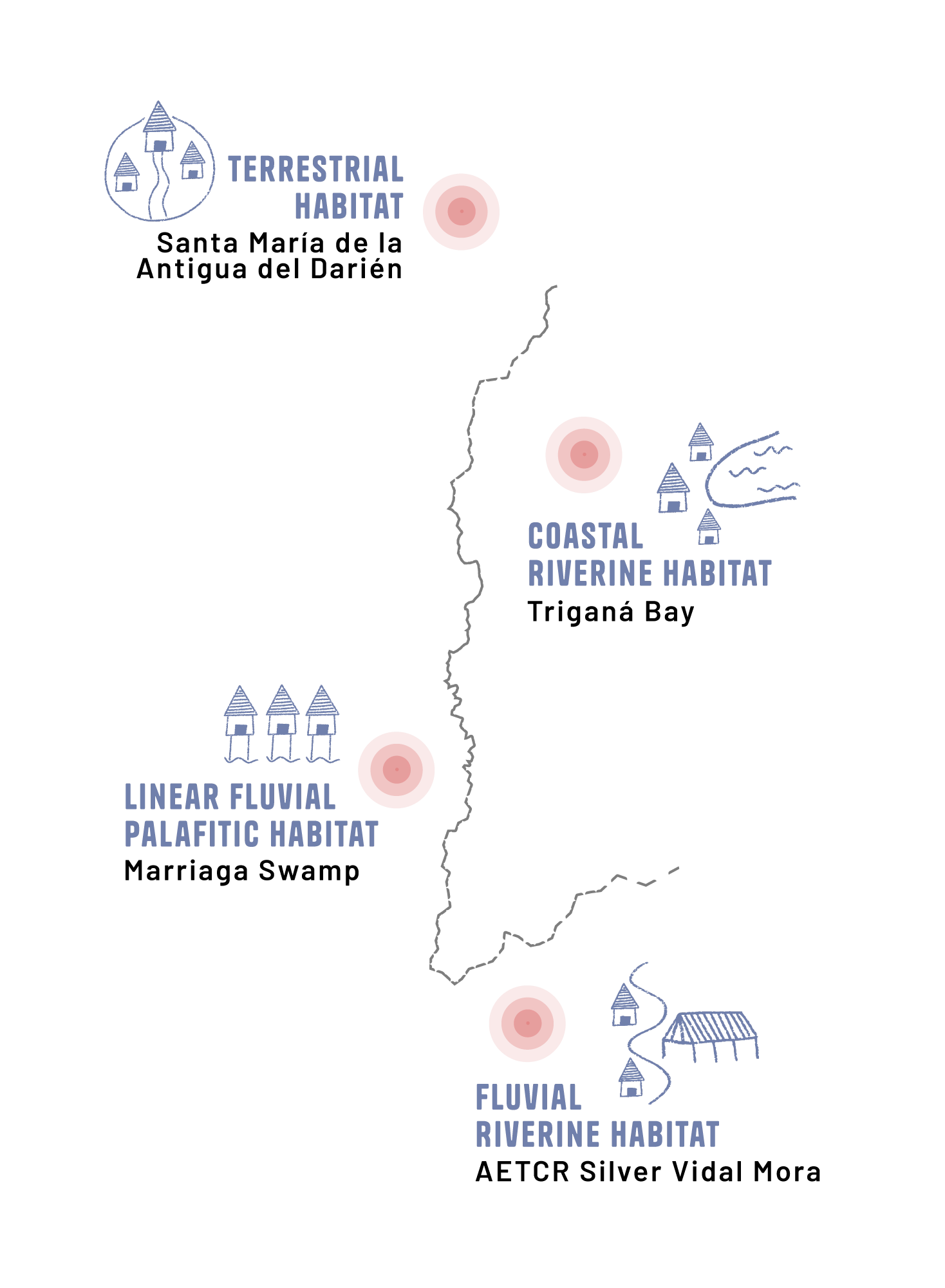te
RRI
TO
RIES
THE BAJO ATRATO HAS BEEN AN ESSENTIAL CROSSROADS
FOR SOCIETIES AND THE FORGOTTEN, UNNAMED DYNAMICS OF STRIP
The Atrato River, a vital relational entity in this region, flows from south to north across the entire department of Chocó, situated between the western mountain range and the Baudó serranía. Historically, it has served as a geostrategic environment marked by continuous reconfigurations, shaped by the convergence of social, economic, military, and cultural processes since the 16th century
(Luis Fernando González Escobar, 2015)
The Pacific region of Colombia is an ancestral territory home to culturally diverse ethnic groups. Its strategic location, lush jungles, and abundant natural welfare have been crucial factors in their strip.
In recent years, territorial phenomena such as the new dynamics of the Peace Implementation Process (Colombian Government; FARC-EP, 2016) and the jurisprudence of the Atrato River (Constitutional Court, 2016) have emerged as opportunities to reflect on how the biocultural traits of emotions are expressed in these territories.
THE FIRST,
aims to establish an institutional framework that promotes justice, memory, and truth as forms of reparation for victims and affected territories, through the Special Jurisdiction for Peace (JEP) and the Commission for the Clarification of Truth, Coexistence, and Non-Repetition.
THE SECOND,
because by recognizing the Atrato River and its tributaries as subjects of rights, it acknowledges the importance of the cultural and emotional elements of the territories.
MARITORIOS
Dwelling between water and land
THE RIVER, THE SWAMP, OR THE BAY ARE LIVING BODIES,
SYMBOLS OF IDENTITY THAT SITUATE THEM IN THE WORLD.
Water, or its absence, shapes a unique identity in each of these four territories:
Dwelling above the swamp means there is no solid land; life floats. In this elongated town, the houses are built side by side, leading to much more intense neighborly relationships.
Dwelling alongside the Curvaradó River not only allows them to cultivate the land in front of their homes but also provides greater mobility, reducing their reliance on boats alone.
In Santa María de la Antigua and Gilgal, while the Cutí River and the Tanela River are not located nearby, they act as cultural connectors, uniting these towns with others in the region.
Dwelling by the bay offers a broader experience, blending the lush jungle with the sea.
The relationship with the landscape is also different:
In Marriaga, the linear layout features the immediate expanse of the mangrove, while in Curvaradó, the river flows alongside the crops. Triganá is unique in that its landscape stretches almost infinitely into the the sea. In contrast, Santa María de la Antigua and Gilgal are enveloped by the rainforest, where endless shades of green accompany every step.
Water embodies movement and emotion;
it flows

connections with
the water
These four territories of the Bajo Atrato
are the focus of this research
Click on the titles to view the information for each territory
Fluvial Riverine Habitat
Linear Fluvial Palafitic Habitat
Coastal Riverine Habitat
Terrestrial Habitat
Territories Bibliography
- Agencia para la Reincoporación y la Normalización – ARN. (2017). https://www.reincorporacion.gov.co/es/reincorporacion/Paginas/AETCRs.aspx
- Corte Constitucional. (2016). Sentencia T – 622 de 2016. http://cr00.epimg.net/descargables/2017/05/02/14037e7b5712106cd88b687525dfeb4b.pdf
- Gobierno Colombiano; Farc-EP. (2016). Acuerdo Final para la terminación del conflicto y la construcción de una paz estable y duradera. http://www.centrodememoriahistorica.gov.co/descargas/finAcuerdoPazAgosto2016/12-11-2016-Nuevo-Acuerdo-Final.pdf
- González Escobar, L. F. (2015). El Darién. Ocupación, poblamiento y transformación ambiental. Una revisión histórica. Parte I. Fondo Editorial ITM.
